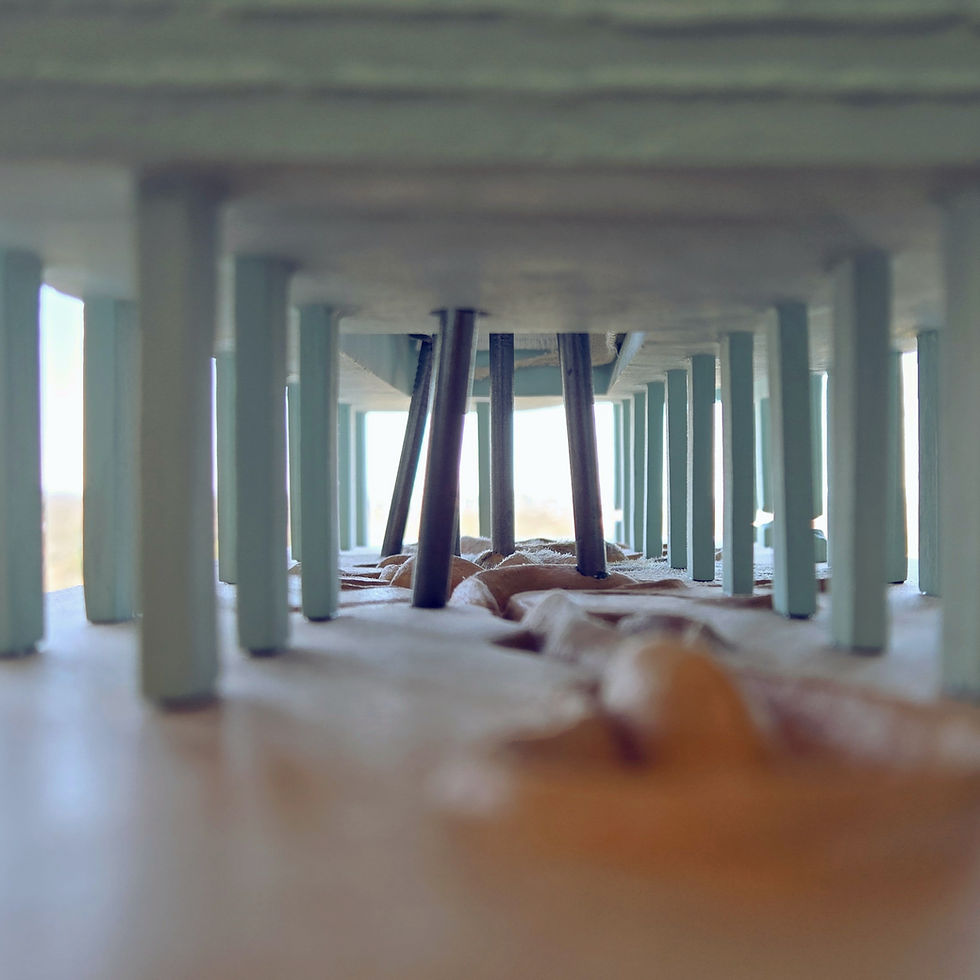Touch of Gloveliness by Shannon Wallace
- Laura Thipphawong
- May 8
- 3 min read
Based in Mississauga, Canada
Touch of Gloveliness, Mixed Media Sculpture, 2023, 55 x14 x12

Gloves are an item that acts as a barrier between skin contact, for a good reason, but they also become an item that signifies boundaries, fears of touch, the necessity of distance, and contagion. The presence of the medical workers' hands is felt through their discarded life-saving tool—the glove. When entering life, the first hands to touch you were probably hands wrapped in latex medical gloves. Throughout life, so many people examine and assist you while wearing these gloves, and the same happens after death too. This sterile material has found new life in playful fashion designs, while remaining a poignant reminder of the life sterility helps to create.
The source of inspiration behind the work accumulated over my lifetime, while witnessing the heartbreak in healthcare. I have a special-needs relative I've watched go through the medical system with hospitalizations, and then I developed chronic pain/illness during my adolescence. I suppose I thought about how many working hours it took to keep us alive—how many times were we touched and by how many hands. The texture of the latex gloves, looking like wrinkled and decaying skin, stuck out to me in many instances as I felt my life force drain from me. The doctors will leave the clinic with their used gloves already forgotten, much like patients left for years on waiting lists.
Isn't it so ironic that a tool to stop my decay is disposable? Isn't it strange that because I'm in pain, I should just let all these people touch me? My pain makes me a communal body to be passed around by different general practitioners, specialists, referrals and departments. I can't say no when they're trying to help me, right?
The sensuality and playfulness of the design of my work emphasize femininity, and reference the gendered connotations of caregiving. Nursing is regarded as a feminine profession despite all the extensive gore and science. The female body is expected to caregive and create life, but mine missed the memo; the gloves share a similar duality of softness in texture and colour, but with sterility and rigidity in function. In the face of unfixable prognoses and pain, I felt I was perceived as an "emotional woman" rather than a patient. Stereotypes contaminate the way one is perceived and create barriers to care. The body's gendered presentation itself is a barrier to fully being seen individually, even medically.
The garments were made by first gluing each latex glove together to form a longer, cloth-like strip, and then hand-sewing it again to reinforce it. I found that a glove-on-glove design would quickly fall apart when applied to a moving body. These garments were made as I was and am still recovering from surgery, in my bedroom, on a large cardboard poster board that is now caked with glue residue. As I tried to manifest not being botched, I fervently made glove teddy bears, hats, a cape, a book, a box, shirts, and skirts. Many people in my personal life told me it's creepy and unsettling, but I kept gluing and sewing, driven by a hypnotic urgency. Someone on Instagram messaged me: “I hate post-modernism” but I still had boxes of gloves left to be shaped... In the end, the distraction of creating overtook the reality of illness.
Additional installation photos









